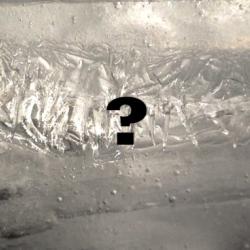Source Institutions
Source Institutions
Add to list Go to activity
Activity link broken? See if it's at the internet archive

Learners explore the variables that affect the properties of ice and the places where different types of ice are found. Using evidence from informational text and multiple media resources, as well as their own observations, learners will match six different mystery ice types to the place where each would most likely be found. Recipes for creating six different simulated ice types are provided.
- 2 to 4 hours
- 45 to 60 minutes
- $1 - $5 per group of students
- Ages 8 - 14
- Activity, Experiment/Lab Activity, Lesson/Lesson Plan, Simulation
- English
Quick Guide
Materials List (per group of students)
- ice cube trays
- 1/4 tsp salt
- 1/4 tsp sand or dirt
- 500 ml tap water
- 500 ml distilled water
- microwave-safe container for heating water
- access to spacious freezer
- towels for cleanup
- dry ice (for transport, optional)
- Student Handout - Ice Observation Sheet
Subjects
-
Earth and Space Science
-
Earth Structure
- Oceans and Water
-
Earth Structure
-
Physical Sciences
-
Heat and Thermodynamics
- Heat and Temperature
-
States of Matter
- Solids
- Liquids
- Changes of Phase
-
Structure and Properties of Matter
- Atomic Structure
-
Heat and Thermodynamics
-
The Nature of Science
-
The Scientific Process
- Conducting Investigations
- Gathering Data
- Formulating Explanations
- Communicating Results
-
The Scientific Process
Informal Categories
- Nature and Environment
Audience
To use this activity, learners need to:
- see
- read
- touch
Learning styles supported:
- Involves teamwork and communication skills
- Involves hands-on or lab activities
Other
Components that are part of this resource:
- Teacher Guide and Recipes - Ice Mystery
- Info Text #1 - Ice Properties
- Info text #2 - How Six Ice Types Freeze
- "What's So Cool About Frozen Water?" video
Includes alignment to state and/or national standards:
This resource is part of:
Access Rights:
- Free access
By:
- Zych, Ariel
Rights:
- All rights reserved, Science Friday,
